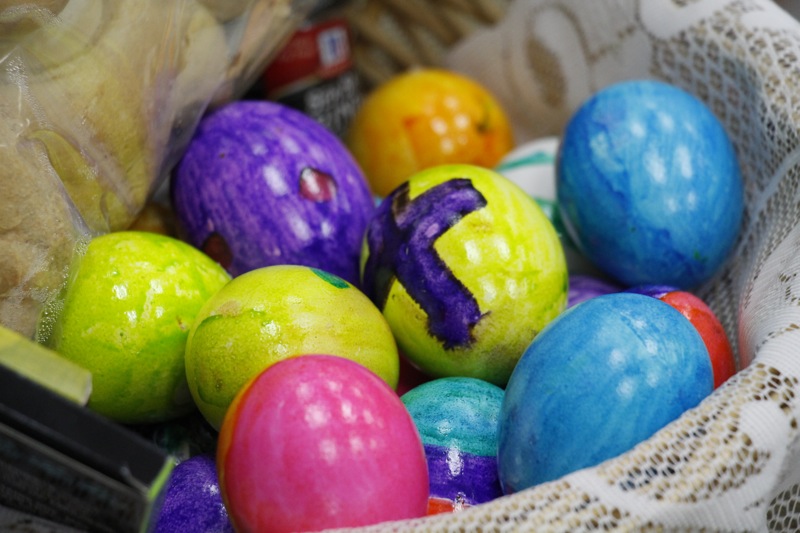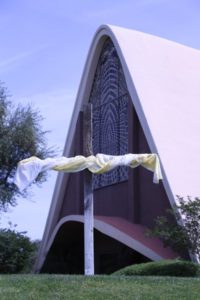

SCOTTSDALE — It’s not just the Easter Bunny who prepares baskets with goodies for the day of the Lord’s Resurrection. Catholic women do too.
On April 4, about 15 of them from St. Maria Goretti Parish lovingly collected the breads, lamb-shaped butter, meat, eggs, horseradish, wine, chocolates and other items their family and friends will feast on Easter Sunday into large wicker baskets and brought them to the church hall on Holy Saturday for the traditional Easter Basket Blessing. It’s a Catholic ritual for many families of Eastern European origin that gained strength in the U.S. in the 1870s, according to Dcn. Lou Cornille who oversaw the blessing.
Many of the women gathered were of Polish descent with Croatia, Ukraine, Italy and the U.S. also represented. St. Maria Goretti has invited area Catholics to the blessing off and on for the last 15 years and steadily the last four years.

Maryann McAllen has been coming since the beginning. It’s generally a small enough gathering that there’s a show-and-tell of sorts prior to the blessing. McAllen, a Scottsdale native, loves hearing about the various cultural traditions.
“I always cry every time because I hear different things from the families and I take something away,” McAllen said.
She brings one of her children every year so they can learn too. That’s exactly why the parish offers an Easter basket blessing, Dcn. Cornille said.
“Parents and grandparents have been doing this for centuries. If we don’t involve the children, the tradition will die,” he said.
Many shared how they or the generation before them once made the Polish sausage, bread or lamb butter. Now many of them choose the quicker option of a local Polish bakery to assist with Easter dinner preparations.
Denise Krupa was excited to have her water blessed so she could spread it to the neighbors. Another woman plans to give each guest a bottle of blessed salt to take home. The life-giving mineral was once believed to keep away evil.
The other traditional Easter basket foods have symbolic meaning too: bread symbolizing Christ’s body, eggs symbolizing victory over death, horseradish symbolizing strength and the bitterness of suffering and ham for health and abundance.
“The Lord gave us senses so we could experience Him. That’s what the Easter meal is all about,” Dcn. Cornille said.






